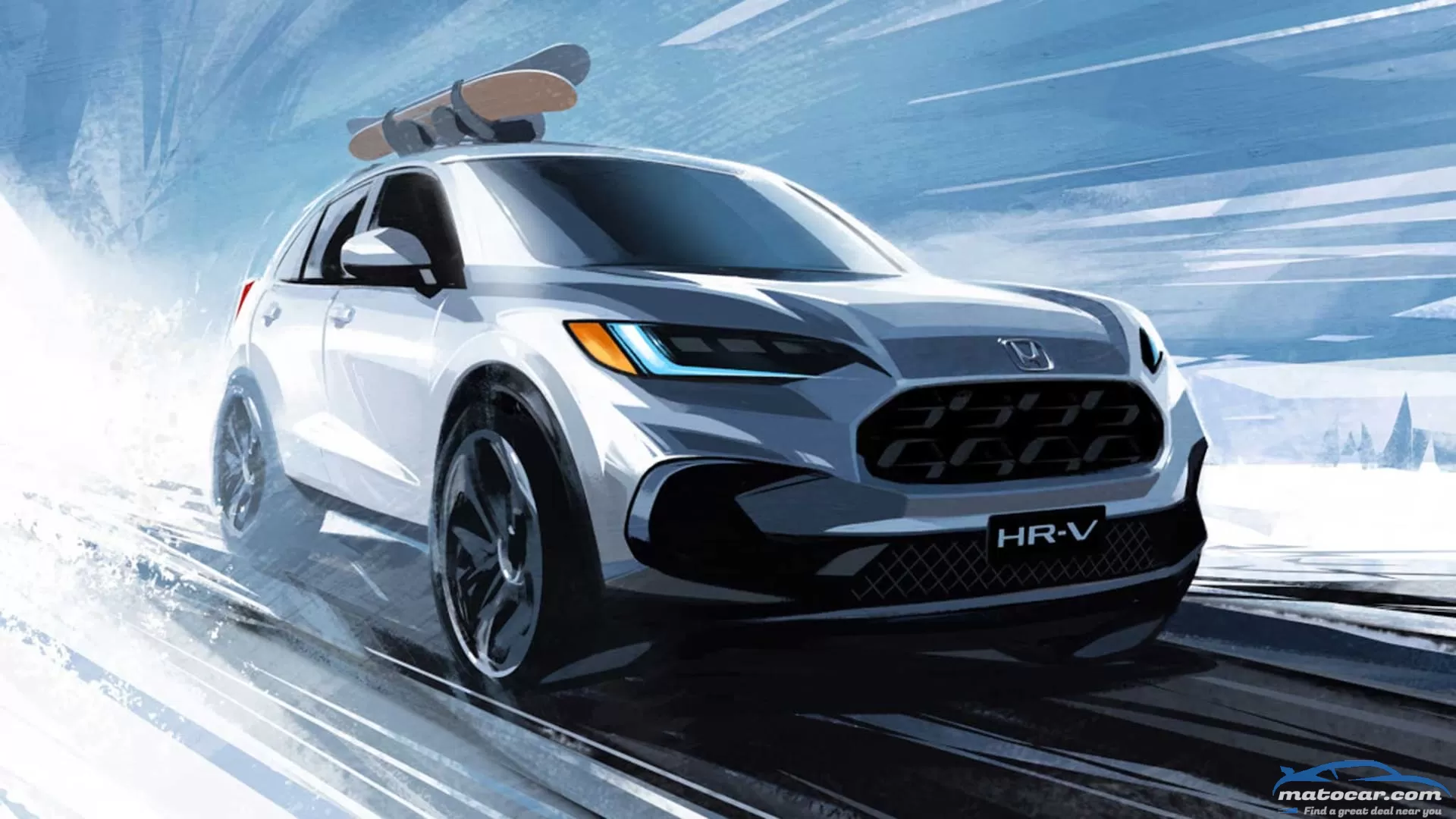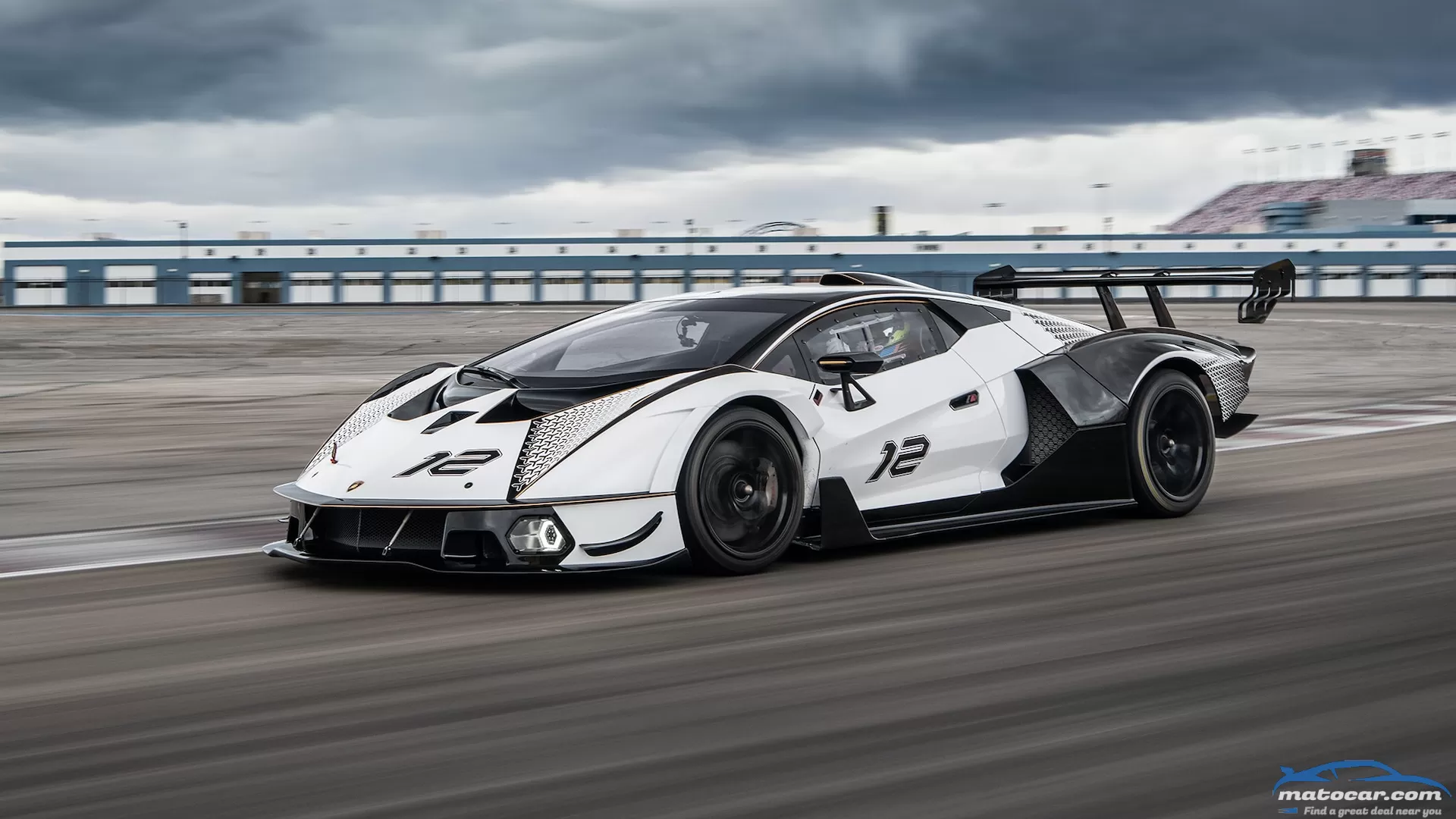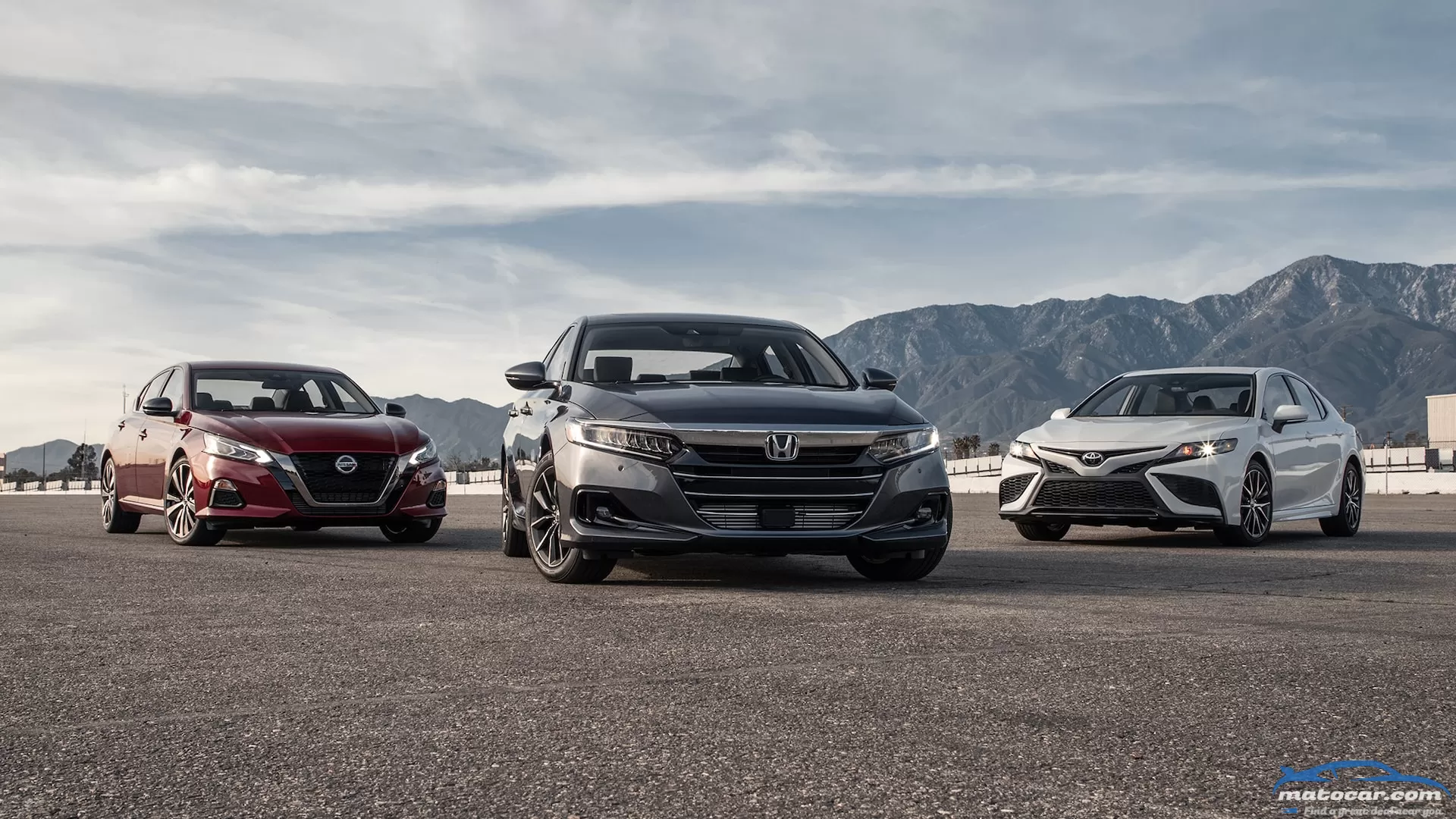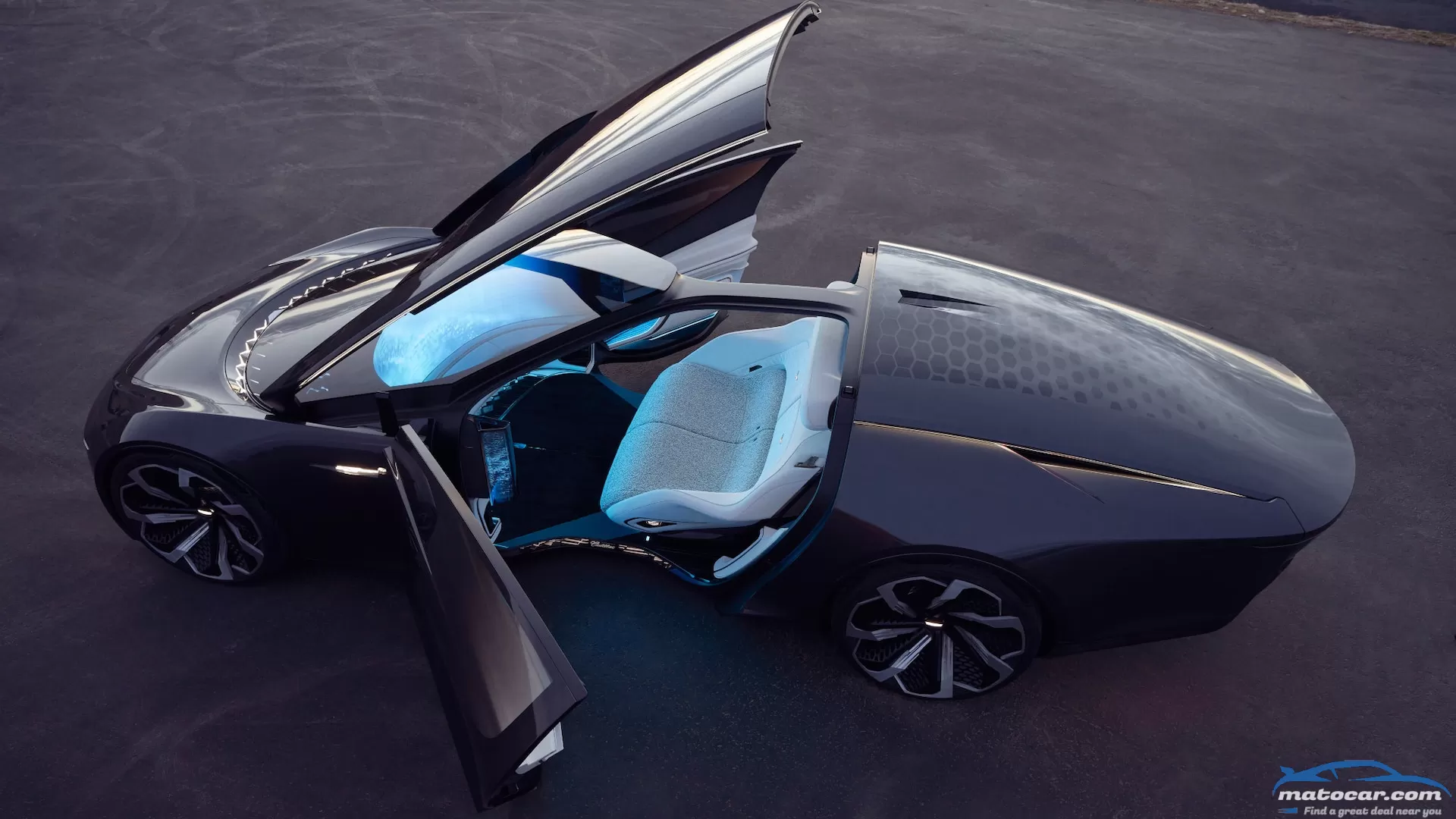Hey Europe, Our 2023 Honda HR-V Looks Better Than Yours

We got all excited when Honda introduced the new Euro-market HR-V (known in some parts of the world as the Vezel), but Honda was quick to tell us to calm the hell down—this wasn't the subcompact HR-V we were looking for. The U.S., Honda told us, would be getting a new HR-V all its own. Not to cast aspersions on our friends at Honda, but any time an automaker tells us something like this—any of them, not just Honda—we have to wonder if we aren't just being put off.
Today, Honda released sketches of the North American-market 2023 HR-V (actually, they look like paintings, which is rather cool). And no, we weren't being put off—this definitely is a different vehicle. Look at the back doors, and what do you see? Door handles on the body. The new Euro-HR-V/Vezel has its rear door handles concealed in the door pillar, just like the current (and soon-to-be-outgoing) HR-V.
From what the paint-sketches show, North America won the HR-V lottery, because if the real thing looks similar, it's going to be a much cuter critter than the HR-V going to Europe. We like the big blacked-out grille—it's rather Kia-esque, from the days when ex-Audi designer Peter Schreyer was trying to make all of his Kias look like Audis. It's certainly a better look than the chromed confusion of the bigger CR-V. (Honda has a new CR-V coming for 2023, and we hope it looks this good.) Speaking of Audis (which we were, weren't we?), the new HR-V's bulbous back end bears quite a resemblance to that of the Audi Q3. We're hoping the swank exterior style is an indicator of what we'll see inside. We rather like the HR-V, and we've always thought a more upscale version would do well with buyers.
And what lurks under that handsome skin? Honda's two-sentence statement accompanying the sketches helps little. As a rule we don't copy and paste press releases, but we'll make an exception, given the dearth of other info here: "Honda kicks off its Year of the Crossover with a sneak peek at the all-new sporty and versatile 2023 HR-V. The all-new HRV will launch in North America this year." Okay, so that yields no information. If we had to guess—which, obviously, we do—we'd predict that one of the new HR-V's powertrains will be the 212-hp hybrid powertrain from the Euro-market HR-V, which is based around a 2.0-liter naturally aspirated engine.
We assume there will be a non-hybrid version, and as we've complained about the current HR-V's leisurely acceleration, it wouldn't surprise us if its 1.8 liter engine is replaced by something with a little more gumption, perhaps the 2.0-liter naturally-aspirated engine from the entry-level Civic and (if we're lucky) Honda's 1.5-liter turbo, also found in the spectacular new Civic.
The fact that the sketches show the HR-V dashing through the snow with snowboards strapped to the roof rack indicates an all-wheel-drive option. That may seem like a no-brainer for an SUV, but remember that some entry-level sport-utes (Toyota CH-R and Nissan Kicks, to name two) don't offer AWD; today's HR-V does offer AWD, however.
Whatever the final HR-V looks like and however it's configured, this teaser has done its job: We are genuinely excited to see what the real thing looks like. We don't need to tell you what a hot market segment the compact SUV field is, one chock full of new and credible contenders like the Toyota Corolla Cross, the Kia Seltos, and our pick of the bunch, the Subaru Crosstrek. We're looking forward to seeing how the new 2023 Honda HR-V stacks up.
You may also like
Modern-day Lamborghini has a habit of milking the underpinnings of its series-production cars for all they're worth in the shape of rebodied and somewhat mechanically upgraded (to varying degrees) ultra-limited editions. If you're unfamiliar, see examples named Reventón, Centenario, and Veneno, for starters, and the most recently controversial and maligned Countach LPI 8004. So it's not terribly difficult to sometimes take a cynic's view that says the company relishes finding relatively easy ways to convince its richest clients to tap further into their hedge funds or throwaway crypto profits rather than developing truly new machines—you know, the type of series-production cars we might decades from now remember just as vividly as we do the revolutionary ones Lamborghini earned its reputation on in the first place. So we were thrilled to discover after a recent drive of the Lamborghini Essenza SCV12 that this offering occupies a different strand on the company's genetic spider graph.What Is the Essenza, Anyway?The Lamborghini Essenza SCV12 is indeed another limited toy for car-crazy moguls, and it carried a starting price of 2.2 million euros. "Carried," because Lamborghini already sold all 40 of them. For the record, U.S. buyers paid whatever the dollar-to-euro exchange rate was on the day of their transaction; at this moment, the price would be nearly $2.5 million if you could still get one from the factory.The "SC" in the Essenza's name stands for "Squadra Corsa," which is the Italian manufacturer's motorsport division. ("Essenza" translates to "Essence" in English.) Squadra Corsa is responsible for developing Lamborghini's GT3 race cars, as well as running the Super Trofeo one-make series that exclusively features Huracán Super Trofeo Evo race cars competing in 50-minute sprint races. Like those Huracáns, the Essenza SCV12 isn't street legal, making it a hugely expensive track-only car aimed at wealthy gentleman racers, track-driving enthusiasts, and gotta-have-everything collectors.Other than the car, the purchase price includes two years of storage at Squadra Corsa's facility in Sant'Agata Bolognese, Italy, with oversight from technicians and 24-hour-a-day video surveillance for owners to look in on their cars whenever desire or paranoia takes hold. One bright spot: Unlike Ferrari and its FXX-K, for example, Lamborghini will allow Essenza owners to take their cars home or wherever they desire, rather than making it such an ordeal owners just leave their cars at the factory.Squadra Corsa does organize and support several arrive-and-drive outings per year at circuits around the world; simply show up, and your baby is there, prepped and waiting to rip. The 2022 schedule features 11 dates between February and December, with stops at famous U.S. road courses including Laguna Seca and Watkins Glen, and contemporary Formula 1 venues Barcelona and Abu Dhabi. Essenza SCV12 owners also get track time during Lamborghini's annual Super Trofeo World Finals event, scheduled in 2022 for early November at Portugal's Portimão circuit. The World Finals entry and accommodations are included in the car's purchase price for three years; other events carry additional entry fees plus the cost of consumables such as tires, fuel, brakes, etc. Lamborghini offers participants driver coaching from its stable of pros, though all Essenza lapping sessions are conducted in a track-day format, without actual racing.Owners also pay extra for any private track time they wish for themselves; the bill depends on the scope of the program but typically falls in the $50,000-$100,00-plus range. Another bright spot: You'll write the check, but one call to Squadra Corsa's concierge yields a proposed itinerary within 48 hours, covering everything you want to do on- and off-track, plus track rental, car shipping (if necessary, including overseas), meals, and anything else you need.Notable Chassis ConstructionHere's where the Lamborghini Essenza SCV12 gets good: This car is a long way from simply being a rebodied and retuned production model. It's effectively a purpose-built race car, though it isn't homologated for competition in any actual racing series. But that was the point: to build a track car unrestricted by the typical performance-limiting rules that govern global GT racing.Lamborghini did, however, pay big attention to safety, working with the FIA—the governing body of international motorsports—to develop the Essenza's safety technology beyond what GT rules require today. In that sense it's a bit of a rolling laboratory, a GT-style race car with a carbon-fiber monocoque chassis built to existing Le Mans Prototype safety standards. But where typical GT race cars use a steel roll cage, the SCV12's carbon cage is integrated within the monocoque structure, a solution you'll see down the road on actual racing-homologated GT contenders.Whereas the Essenza's carbon chassis is based on that of the Lamborghini Aventador, only the lower part of the monocoque is similar, the company says, with 60 percent of the chassis redesigned to hit the safety targets and comply with FIA standards. The front and rear frames, suspension, gearbox, and electronics were developed specifically for this car.What's It Like to Drive?Lamborghini let us behind the Essenza SCV12's Formula 1-style wheel for 16 laps of Las Vegas Motor Speedway's 1.1-mile road-course configuration. The nine-turn circuit is more club track than proper race course; most of it is taken in second or third gear, but the front straight allowed for an extra gear or two and speeds in the 140-mph ballpark before a reasonably challenging-to-nail heavy braking zone for the second gear Turn 1 lefthander. The venue, and the fact Lamborghini let us run whatever pace we wanted, was enough to demonstrate the Essenza's intriguing package of thrills combined with approachability for non-pro drivers.You get a kick out of the experience before you're even out of pit lane. Strapped into the five-point harness, the starting procedure is simple but fun, especially for motorsports enthusiasts: Flip on the master switch and briefly let the electronics boot up, then push the ignition button followed by the start button. Once the 6.5-liter V-12 thumps alive, hold the car on the brakes (left foot preferred), punch and hold the blue button on the steering wheel for neutral, and click the right-hand shift paddle once for first gear in the Xtrac-built six-speed sequential manual racing 'box. Foot off the brake, hit the throttle, and the automated clutch (there is no pedal) engages, and you're off.You bounce around as you trundle down pit lane, typical race-car behavior thanks to a limited-travel pushrod suspension that doesn't like painfully slow driving. The rear suspension is mounted straight to the gearbox, which serves as a stressed structural chassis element (common race-car architecture that's rare in production vehicles).Kill the pit-speed limiter by clicking a button on the wheel, and bam! The Essenza howls like only a naturally aspirated Italian V-12 does, noises exaggerated by the SCV12's unique and unrestricted Capristo exhaust system. The engine is the same as the Aventador's, but thanks to a less restrictive exhaust, a bespoke air-intake system that makes use of ram effect via the engine-feeding roof scoop, and a Motech motorsports ECU, it produces 820 hp at 8,500 rpm and 568 lb-ft at 6,000. That's a 60-hp and 37-lb-ft increase compared to the stonking Aventador SVJ road car. Gulp.But within a few laps, even once we turned the power all the way up—a mode switch on the wheel offers five settings beginning at 695 hp and ramping up in 25-hp increments with each click of the dial—the nuclear straight-line speed isn't what got us. Rather, with bespoke Pirelli slick tires and monster downforce from the aero package, the car's grip and handling have you shaking your head and giggling even on a slow track like the one we drove. For perspective, Lamborghini claims 2,645 pounds of downforce at 155 mph, with even more at higher speeds; that exceeds the downforce of a true GT3 race car. It's darn near almost enough to theoretically allow the car to drive upside down without falling off the ceiling, if the track allowed it.The LVMS road course didn't let us get near what the Essenza's aero and tire package can really do, but we still felt the massive grip, especially through a flat-out third-gear kink toward the end of the lap, and also in how late we could brake into Turn 1. (The steel brakes are by Brembo, with carbon-ceramics also available.) Braking-marker boards on the side of the front straight served as guides; Lamborghini pro drivers present during our test drive suggested braking at the third board from the end as we learned the car, and then suggested working our way down to braking between it and the second board. But after a few laps of feeling what the car was capable of and finding our confidence buoyed, we rocked the Essenza down the front straight past the third board, past the halfway point, and nearly all the way to the second marker before crushing the pedal.Holy Ferruccio, did it ever work. The brake pedal feels softer than you might expect in its first bit of travel then firms up significantly and provides outstanding modulation and control. There are no latency issues with the pedal, and that fact allowed us to bleed massive speed immediately, then remain easily in control as the back end wobbled before gripping back up through the middle of the braking zone. Finally, downshifts completed with a few satisfyingly solid clicks of the left-hand paddle, we trailed off the pedal at the turn-in point and the Essenza dug in, nailed the apex, and tracked out the other side with what we swear was a yawn. We're convinced we could have gone another 20 feet deeper into the braking zone—and we also weren't stupid enough to try it. But the fact we believe it after such a brief experience of the Essenza SCV12 says a lot about how much confidence the car inspires. We didn't bother recording lap times on this day, but Lamborghini told us the Essenza is some 3 to 4 seconds quicker than the Huracán GT3 race car around medium-to-high-speed tracks in the hands of pro drivers, despite it weighing a few hundred pounds more. We have little doubt this is accurate.Odds and EndsThe car's overall setup during our drive was tuned toward understeer just to keep things manageable for the amateur drivers Lamborghini invited to sample it, but there's a huge amount of adjustability in the Essenza. Even with this setup, we discovered we could rotate the chassis somewhat into the corners using the brakes and then confidently go to the power. One thing for drivers to keep in mind is that this is a heavier, long-wheelbase (114.4 inches) car compared to most racing models, so it's a bit more deliberate, relatively speaking, in its responses to inputs. Some people might even initially find it counterintuitive if they get into it with only the eye-catching power and torque specs in mind while expecting the knife-edge, snappy reactions of a car boasting a smaller footprint.With more time, we would have found a slightly more comfortable position for the steering wheel, which, just like the pedals, is easily and quickly adjustable to accommodate a range of driver sizes and preferences, and we disliked the screen mounted in the center of the roof above the dash. The latter is for displaying data to technicians after on-track sessions, but its location impedes your field of view somewhat when you try to look ahead through corners like you should always do. To its credit, Lamborghini says it has heard the same comment from some owners and is working on a better solution.Our biggest gripe, though, is we didn't have time to run another 50 laps. Not only for fun and to increase our speed and adapt ourselves more to what the car likes, but to also explore deeper into exactly what it can do when you make adjustments. Along with the power/engine map, the trick steering wheel (which we didn't mess with outside of the power settings) allows you to tune the differential, clutch, traction control, ABS, and power steering to your preferences depending on the circuit and the specific corners you're driving. There are also controls for brake bias, throttle behavior, and more. The total package makes for a mighty engaging and pure race car experience, even though this isn't technically a race car. Well, at least not a homologated one you'll ever see in true competition.In a way, then, you could call the Lamborghini Essenza SCV12 a car without a home, except Lamborghini and Squadra Corsa have created a community around it for the 40 owners who understood the vision and what the Essenza offers. But because of the car's limited numbers and track-only usability, there's a good chance you'll never see one in the wild, let alone running in anger. From that perspective, it's massively tempting to lump it in with those other rare, virtually one-off modern Lamborghinis that have come and gone and are now distant memories mentioned only occasionally by diehard hypercar nerds. And that's a shame, because after driving the Essenza SCV12 as it's made to be driven, we suspect we'll forever remember this one as being in an entirely different league.Lamborghini Essenza SCV12 BASE PRICE $2,488,357 (est) LAYOUT Mid-engine, RWD, 2-pass, 2-door coupe ENGINE 6.5L/820 hp @ 8,500, 568 lb-ft @ 6,000 DOHC 48-valve V-12 TRANSMISSION 6-speed sequential CURB WEIGHT 3,230 lb (est) WHEELBASE 114.4 in L x W x H NA 0-60 MPH 2.8 sec (est) EPA FUEL ECON NA EPA RANGE (COMB) NA ON SALE Sold out Show All
There's a reason the terms "midsize sedan" and "family sedan" are interchangeable. Once upon a time, before crossovers and SUVs took over the psyche of American car buyers, these right-sized four-doors were all the car most families needed. They still are, but with their functional roles having been stolen by compact and midsize SUVs, midsize sedans are pivoting toward style and driving fun as a means to attract attention. If practical-minded buyers flock to SUVs, the thinking goes, to hell with practicality—bring on a sedan with a turbocharged engine, an athletic chassis, and eye-catching flair.This isn't to say the affordable midsize four-door sedans on this list aren't practical. After generations of size increases, most of the family sedans in this segment are huge inside, with commodious trunks, too. Most are FWD, but AWD is often available to offer further enticement for would-be SUV shoppers. Many are also surprisingly fuel efficient, and several have hybrid powertrains available. We've reviewed them all and ranked them through our MotorTrend Ultimate Car Rankings, so read on for MotorTrend's picks for the best mainstream midsize sedans you can buy for 2022.
At last year's virtual CES, Cadillac introduced a number of virtual concept cars under its Halo Concept Portfolio series. This year CES is happening in real life (well, mostly), and Caddy has a real-life concept car to show called Inner Space. Forget about steering yokes that fold away: The Inner Space is a completely autonomous luxury car for two, more of a suite-on-wheels than a traditional vehicle.Inside the smooth, sleek shape—one we'd like to call an Eldorado of the future, if the rear half of the car didn't remind us so much of Chevrolet's 1990 CERV III concept—is what looks like a luxury cabin for two. Doors and the roof open to reveal a single bench seat that splits and separates for easy ingress, then comes together for…. Well that's the question. For what?Not for a drive, certainly; there are no driver input controls, and atop a piece which we might have once called a dashboard, the Inner Space has a giant wrap-around screen that, so far as we can tell, all but blocks the view out of the massive windshield. (That seems strange given that the top of the cabin is nearly encased in glass.) Instead of pedals, the concept has pillows—and blankets and a set of slippers all arranged neatly on a tray that slides out from under the screen. Hey, baby, it's a long, boring drive to Phoenix and we've got nothing better to do... GM touts the Inner Space's entertainment system, which includes Augmented Reality displays—we're assuming that means you get to see where you're going on the big screen, presumably with some degree of interactivity—and a "Wellness Recovery" theme. Cadillac says the car uses an AI-driven interface that uses biometric input. Perhaps that means it knows when to cut the outside view, dim the lights, bring up the fireplace screensaver and put Barry White on the stereo.Not much is said about the mechanical features of the Inner Space except that the battery modules are spread about the car and not just concentrated in the floor, which opens up more inner space. The tires, specially designed by Goodyear, are designed to provide a quieter ride and are made with renewable materials such as soybean oil and silica from rice husks rather than petroleum.As car fans, we probably should object to a car that completely removes the driver from driving, but we can appreciate having a rolling two-seat cocoon for those long, featureless, fatiguing drives. We won't insult your intelligence by talking about a production version, but we do expect many of the car's features to make it to reality; the augmented reality technology seems particularly engaging. That and the pillows and the blanket. After all, it's a long drive home from Las Vegas.




0 Comments